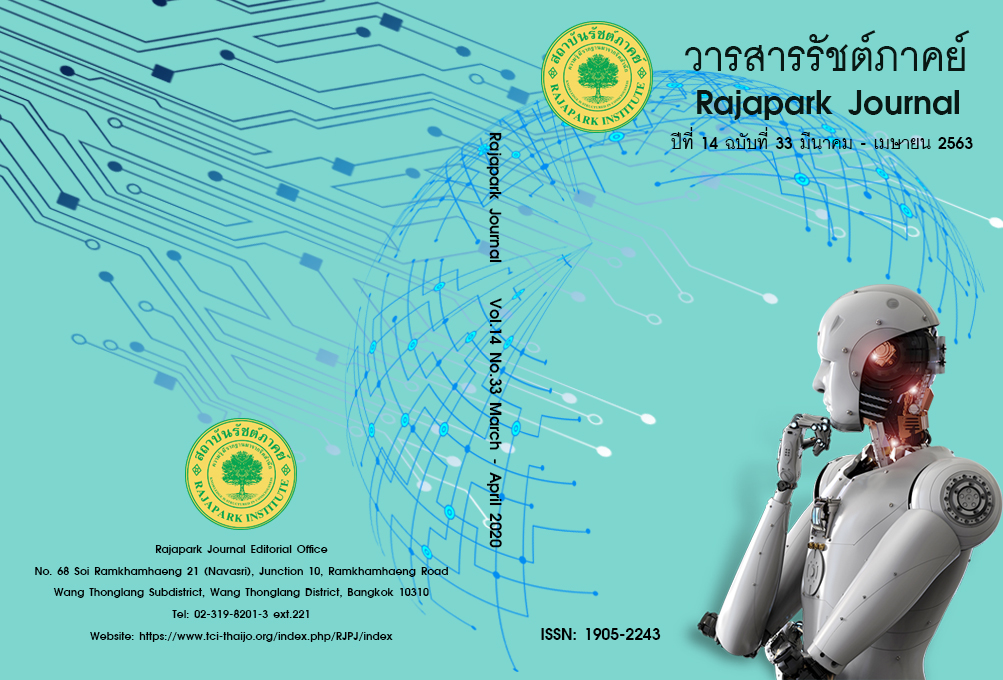Administrative Process Differences among Secondary Educational Service Area Offices with different Learners’ Quality
Main Article Content
Abstract
The objectives of this research were to study 1) the evaluation results of the administrative process and learners’ quality indicators as well as 2) the differences in the administrative processes between secondary educational service area offices with different learners’ quality. 42 secondary educational service area offices were the target population group of the study. Monitoring and evaluating forms on the management of educational service area offices together with site visits was used for collecting data in the academic year 2017. Frequency, mode, means (μ) and standard deviations (σ) were used for data analysis. The results of the study were as follows: The evaluation results for most of the 7 administrative process indicators were in very good-excellent levels whereas the learners’ quality indicator was at fair-good levels. The secondary educational service area offices with a good level of learners’ quality have 5 better administrative process indicators from overall 7 ones than those with fair level.
Article Details
Views and opinions appearing in the Journal it is the responsibility of the author of the article, and does not constitute the view and responsibility of the editorial team.
References
Boonto, S. (2018). The Results of the Educational Quality Management in the Secondary Educational Service
Area Office 33 Using Team-Partnership-Success (TPS Model). Retrieved April 29, 2019 from http://www.secondary33.go.th/index.php?option=com_content&view=article&id=6986:---33--tps&catid=48:-m-m-s&Itemid=61
Khattiyasuwan, S. (2019). Relationship Among Administrative Processes and Outputs of the Educational Service
Area Offices in the Academic Year 2016. Bangkok: Rajapark Institutes.
Ministry of Education. (2003). National Education Act 1999 and Amendments to the Second Edition 2002
together with Relevant Ministry Regulations and Compulsory Education Act. Bangkok: Delivery of Goods and Parcels Printing House.
Office of the Basic Education Commission. (2014). The Educational Service Area Office Standards. Bangkok:
SE-ED Public Company.
Office of the Basic Education Commission. (2016). Report of Monitoring and Evaluating Results on Administration
of accordance with the Operational Focus of Office of the Basic Education Commission. Bangkok: Agricultural Cooperative Printing Demonstrations of Thai Co. Ltd.
Office of the Basic Education Commission. (2017). Annual Report 2016 of Office of the Basic Education
Commission Ministry of Education. Bangkok: Agricultural Cooperative Printing Demonstrations of Thai Co. Ltd.
Office of the Basic Education Commission. (2017). The Educational Service Area Office Standards 2017.
Retrieved June 30, 2019, from https://www.spc.go.th>image>
Paijit, P., & Thongchote, C. (2017). Administrative Process Affecting the effectiveness of Food Processing
Community Enterprise in Surat Thani Province. Retrieved June 30, 2019 from e-journal.sru.ac.th. /index.php/msj/article/view/779.
Secondary Educational Service Area Office 29. (2013). Development Guidelines. Retrieved April 30, 2019,
from https:/www. go.th>ongin2
Secretariat of the house of representatives. (1997). The Constitution of Thai Kingdom 1997. Bangkok:
Secretariat of the house of representative.
Thamavitheekul, A. (2009). System Concept. Retrieved April 30, 2019 from https://panchalee.wordpress.com/
Wikiipedia. (2017). Educational Service Area. Retrieved April 3, 2017, from https://th.wikipedia.org/wiki/


